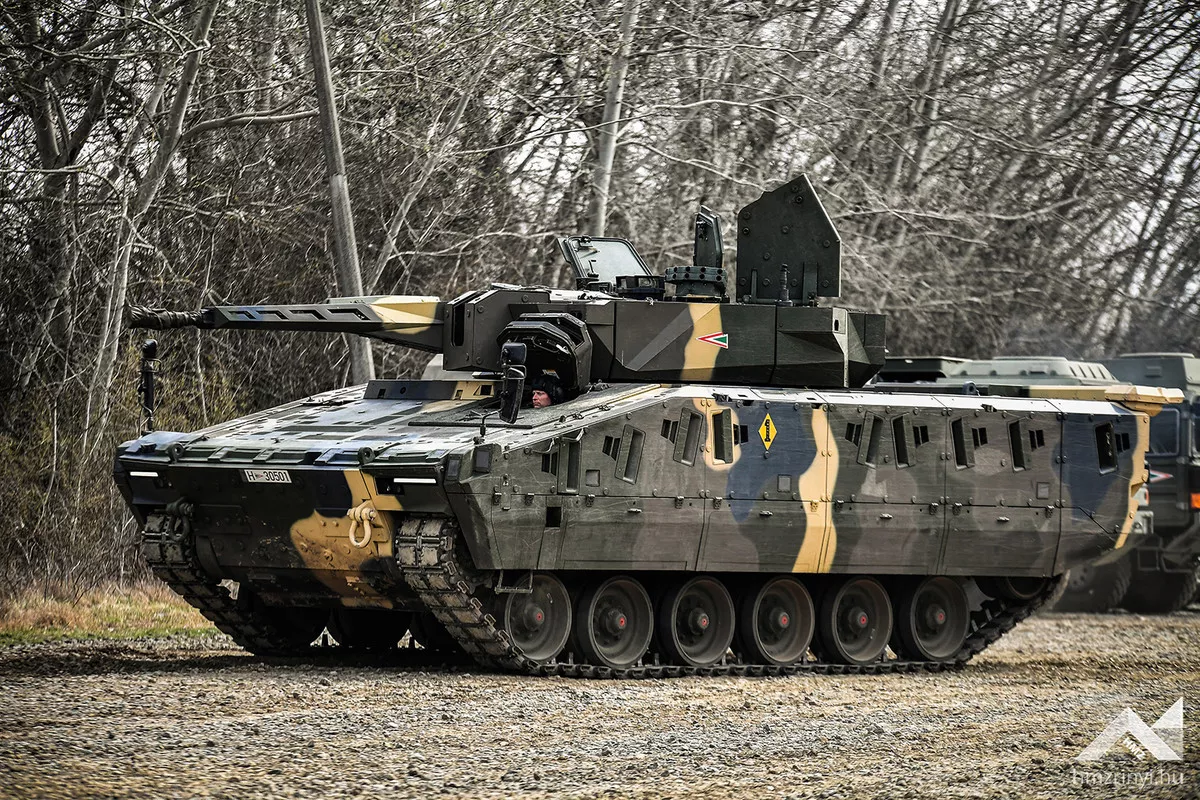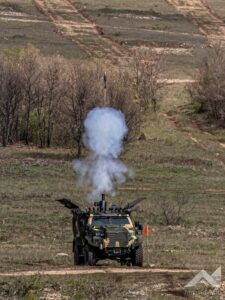The ambitious armament programme of the Hungarian armed forces, originally called ‘Zrinyi 2026’, has also had a lasting influence on the equipment of the infantry. In addition to aspects of modernisation that affect all branches of the armed forces, such as small arms, communications or personal equipment, the issue of tactical mobility is of particular importance.
The Hungarian infantry has experienced a significant increase in combat value due to the preferential treatment in the conversion of their small arms systems to models from Czech manufacturer CZ, as well as new Carl Gustaf M4 portable anti-tank weapons. Personal equipment was also addressed within the framework of the project originally called ‘Digital Soldier’, with elements such as the new plate carrier and helmet. With the procurement of the first batch of M12 120 mm mortars, manufactured by Hirtenberger, modern indirect fire capability also returned. However, the tactical mobility of infantry units, as well as their direct and indirect combat support has also been the focus of the armament programme for some time. This component is also becoming increasingly important due to the formation of large new units. For instance, the formation of the new 62nd Mechanised Infantry Brigade only began in the summer of 2022.
Infantry Fighting Vehicles for the Infantry Brigades
The future core of these mechanised forces will undoubtedly be the KF41 Lynx infantry fighting vehicle (IFV) from Rheinmetall. The agreement between the Hungarian government and the German defence company provides for the manufacture and delivery of 209 KF41 Lynx IFVs and new BPz3 Büffel armoured recovery vehicles (ARVs), as well as other services such as simulators worth more than EUR 2 Bn. This makes the project the most cost-intensive to date in the context of upgrading Hungary’s mechanised infantry.
In the initial production phase, Hungary is to receive 46 Lynx IFVs and nine BPz3 Büffel ARVs from German production. The remaining 163 IFVs will subsequently be produced in Zalaegerszeg in western Hungary by the Rheinmetall Hungary Zrt. joint venture between Rheinmetall and the Hungarian state. Aside from the IFV variant, mortar and air defence variants are also planned.

Credit: Hungarian MoD
With the Lynx, Hungarian armed forces will regain a capability which has been absent since their BMP-1s were retired. At the time, these were replaced by BTR-80s for lack of a better alternative, which were not able to provide the same capacity to accept heavy armaments as a tracked IFV. This family of vehicles has also undergone some form of modernisation in the course of its life cycle and, in addition to the APC variant, medical and NBC reconnaissance variants are also in service with the armed forces. However, the replacement of the Russian-made wheeled armoured vehicle with the Lynx is only partially envisaged, as wheeled vehicles are also expected to play a considerable role in ensuring infantry mobility in the future.
The Need for Protected Wheeled Vehicles
One of the solutions is the ‘Ejder Yalçın’ 4×4 vehicle, which has been in series production in Turkey since 2014. The protected wheeled vehicle can be fitted with protection conforming to STANAG 4569 Level 4 against ballistic threats. It is powered by a 375 hp turbo diesel engine and has an unladen weight of 14 tonnes.
The first 40 vehicles, known as ‘Gidrán’ in Hungarian service, have already been delivered by Turkey and equipped for a wide range of tasks. Numerous variants and possibilities for further development are planned for the versatile vehicle. According to the Hungarian Armed Forces, the vehicle, which is designed with an open system architecture, has the potential to perform a variety of specialised tasks. These extend beyond traditional infantry mobility, and into increasingly relevant segments such as the tactical mobility of drone operators or electronic warfare troops.
One of these core segments is certainly the revival of a powerful infantry indirect fire capability, which on the modern battlefield has limited survivability when not operated from a mobile platform. Even if the Hungarian heavy brigades envisage using the Lynx to meet their mobile mortar needs, the Gidrán has already demonstrated its suitability for this role in the summer of 2022 as part of a firepower demonstration. Rheinmetall’s MWS120 Ragnarok mortar served as the indirect fire component during this display.

Credit: Hungarian MoD
Similarly to the Lynx, the Gidrán will be largely manufactured in Hungary. A joint venture consisting of Rheinmetall and the Hungarian state-owned HT Division is slated to equip the vehicles with modern command and communications equipment as well as sensor technology. Around 260 vehicles are planned to be produced. According to Hungarian media reports, the integration of turret variants and weapon systems developed by Rheinmetall is also part of the project. The vehicles are due to be produced by town of Kaposvár, located South of Lake Balaton.
Outlook
Since the beginning of the current armament programme, the Hungarian infantry has undoubtedly experienced a huge leap forward in terms of capabilities and firepower. Aspects such as the commissioning of new uniforms with modern camouflage patterns and improved personal equipment not only increase the protection and thus the survival of the individual soldier. They also have a direct influence on the service satisfaction of the soldiers, which is a relevant factor for armed forces facing competition in other sectors of the labour market.
The real challenge of the future, however, will be the integration of individual components into a sophisticated command and control (C2) system that, through networking sensors and effectors, allows Hungary’s forces to rapidly engage targets while maintaining good survivability. As part of meeting this challenge, a mobile air defence system mounted on a protected vehicle platform will be needed in future. Here, a decision has yet to be announced. Even though the Lynx is being pitched as a platform option by observers, there is also something to be said for a wheel-based solution, such as the Boxer from Artec. As such, Hungary still faces significant decisions ahead, and will also need to overcome technological and organisational hurdles associated with the introduction and harmonisation of individual systems.
Kristóf Nagy







